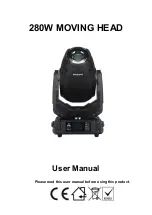
11
TRANSPORT, STORAGE, CLEANING
The textile materials of our products consist of
PA or PES. The heat they are exposed to must
therefore never exceed 100 °C. The hardware
components consist of aluminum and steel. Chem-
icals may attack the material and cause it to lose
in strength. In case of reactions such as discolor-
ation or hardening, the product must be retired for
safety reasons.
The product must always be
transported
in
suitable packaging (protected from dirt, moisture,
chemicals, UV radiation, mechanical damage, etc.)
Storage conditions:
�
protected from UV radiation (sunlight,
welding units,...),
�
dry and clean
�
at room temperature
�
away from chemicals (acids, alkalis, liquids,
vapors, gases, ...) and other
aggressive conditions,
�
protected from objects with sharp edges
For
cleaning
, use lukewarm water and mild-action
detergents. Then, rinse the equipment with clear
water and dry it prior to putting it into storage. Dry
the product in a natural way, not near fires or other
heat sources.
For
disinfection
, use only substances that do not
have an impact on the synthetic materials used.
If you fail to observe these provisions, you will be
putting yourself into danger!
REGULAR INSPECTIONS
Checking
the equipment at regular intervals is
absolutely necessary
: your safety depends on the
effectiveness and durability of the equipment!
Before and after each use
, the equipment should
be inspected for wear or damage. Also check the
equipment for the legibility of its product labels!
Damaged components or components subjected
to a fall must be retired from use at once. If there
exists only the slightest doubt, the product must
be retired or subjected to testing by a competent
person.
Moreover, when using the equipment in personal
protection to EN 365, it must be checked
at least
every 12 months
by a competent person strictly
observing the instructions, or else by the man-
ufacturer and
be replaced
as necessary. These
inspections must be documented (documentation
of equipment, cf. attached Inspection Sheet). Be
sure to observe the national rules and standards
regarding the inspection intervals.
This inspection must comprise:
�
Inspection of the general condition: age,
completeness, soiling, correct composition, ...
�
Inspection of the labels: Label exists?
Legible? (CE marking exists? manufacturing
date, serial number, EN standard,
manufacturer, designation)
�
Inspection of all individual parts for
mechanical damage such as: cuts, cracks,
notches, abrasion, deformation, ribbing,
curling, squashing, ...
�
Inspection of all individual parts for thermal
or chemical damage such as:
fusions, hardening, discoloration
�
Inspection of metallic parts for corrosion and
deformation.
�
Inspection of the condition and completeness
of the end terminations: seams (e.g. no
abraded sewing thread), splices (no slipping
apart), hitches.
�
Inspection of all harness closures for their
proper functioning (e.g., proper locking)
Again, the following rules apply:
If there exists
only the slightest doubt, the product must be
retired or subjected to testing by a competent
person.
MAINTENANCE
Only the manufacturer is permitted to carry out
repairs on the product.
SERVICE LIFE
Only if the equipment is rarely used and properly
stored (see item Transport, Storage and Cleaning)
can its service life (useful life) be up to 10 years
from the date of manufacture. Intensive use re-
duces the life span significantly. The actual service
life depends solely on the condition of the product
which is influenced by a number of factors (see
below). Extreme conditions may shorten the life
span to a single use or even less if the equipment
TRANSPORT, STORAGE, CLEANING
REGULAR INSPECTIONS
Содержание easyAccess
Страница 70: ...70 NOTES...
Страница 71: ...71 NOTES...












































